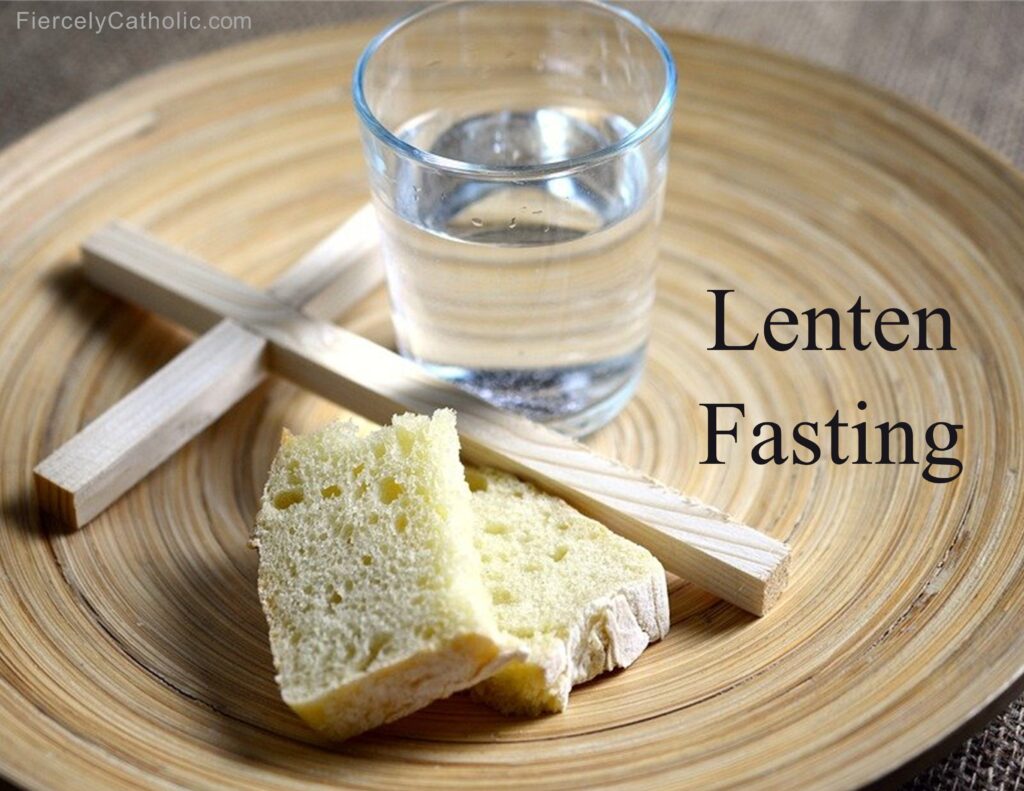
Jesus fasted and He taught his disciples to fast, not merely to eat less food but to experience an interior conversion. Christian spiritual fasting, particularly during Lent, should be focus on turning away from sin and turning toward God.
On Ash Wednesday and Good Friday, Catholics are required to eat no more than one full meal and two smaller meals that do not add up to a full meal. Snacking between meals should also be eliminated.
Catholics often also give up a particular item, habit, or comfort for the duration of Lent, depriving themselves of something good so they can focus more on the greater good.
Along with prayer and almsgiving, the practice of fasting is a pillar of the season of Lent.
Catholics are also encouraged to fast, make sacrifices, and perform other penitential practices throughout the year.
Loving the way that God intends:
Offering our hunger as a prayer to God:
A deeper meaning behind fasting:
“When you fast, do not look gloomy like the hypocrites. They neglect their appearance, so that they may appear to others to be fasting. Amen, I say to you, they have received their reward. But when you fast, anoint your head and wash your face so that you may not appear to others to be fasting, except to your Father who is hidden. And your Father who sees what is hidden will repay you.”
Matthew 6: 16-18
Fasting during Lent is not like making New Years Resolutions:
Recognizing what we have little control over:
The seasons and days of penance in the course of the liturgical year (Lent, and each Friday in memory of the death of the Lord) are intense moments of the Church’s penitential practice. These times are particularly appropriate for spiritual exercises, penitential liturgies, pilgrimages as signs of penance, voluntary self-denial such as fasting and almsgiving, and fraternal sharing (charitable and missionary works).
Catechism of the Catholic Church 1438
Not letting the appetite be in control:
More than just giving up food:
Saying “no” to say “yes” to greater things:
The faithful practice of fasting contributes, moreover, to conferring unity to the whole person, body and soul, helping to avoid sin and grow in intimacy with the Lord. Saint Augustine, who knew all too well his own negative impulses, defining them as “twisted and tangled knottiness”, writes: “I will certainly impose privation, but it is so that He will forgive me, to be pleasing in his eyes, that I may enjoy his delightfulness”. Denying material food, which nourishes our body, nurtures an interior disposition to listen to Christ and be fed by His saving word. Through fasting and praying, we allow Him to come and satisfy the deepest hunger that we experience in the depths of our being: the hunger and thirst for God.
Pope Benedict XVI, Message for Lent, 2009
The interesting history of Lenten fasting:
The Truth, Goodness, and Beauty of the Catholic Church
Physical signs of spiritual realities:
Share this page with friends and family to start a conversation about your faith.
Don’t miss a post. Learn more about the Catholic Church and strengthen your Catholic faith.
Find more Fiercely Catholic video issues here.
Subscribe here.


